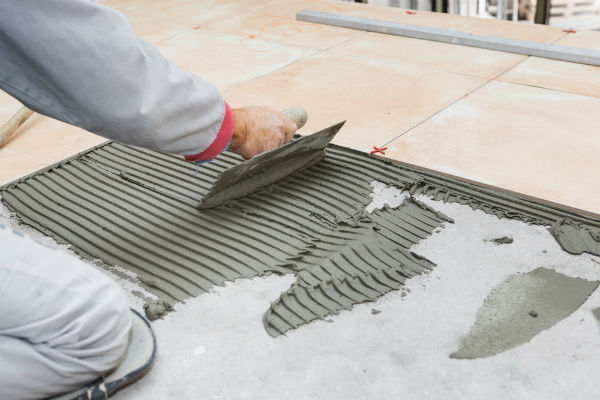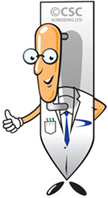Anhydrite/gypsum based screeds are popular for their free-flowing and self-levelling properties as well as ease of installation. They differ from traditional screeds in that they use a calcium sulphate binder instead of Portland cement in the screed mix. The calcium sulphate based binders allow the screed to be laid to a lower thickness than traditional cement-sand screeds. The thinner screed layer coupled with force drying after seven days can provide quicker drying times and lower drying shrinkage.
However, special care must be taken while tiling and installing the final floor finish on anhydrite screeds as they are inherently incompatible with cement and cement based adhesives. The sulphates in anhydrite screeds react with calcium aluminates present in cement (cement based adhesives) to produce a crystalline powder called ettringite.
The formation of ettringite can damage and weaken the screed and cause structural changes in the screed, cause delamination of tiles and other floor coverings and increase the risk of floor failure. This is usually aggravated by the presence of moisture – either from within the screed or from external sources such as spillage or leaks from plumbing, groundwater or rain penetration.
Prevention of Sulphate Attack
It is important to seek manufacturer’s advice and ensure that the adhesives used are compatible with anhydrite screeds. Cement-based adhesives should only be used after priming the screed surface with a suitable priming agent recommended by the manufacturer.
Sulphate resistant cement adhesives, gypsum based adhesives and decoupling membranes are also being used to protect screeds from sulphate attack. However, they can be expensive and should only be adopted after consulting with the manufacturer.
It is also important to make sure the screed is protected from all internal and external sources of moisture. The screeds should be allowed to dry for the prescribed drying time before laying the final floor finish, as any residual construction water that remains in the screed can further increase the risk of sulphate attack.

WHY SCREED TESTING CAN SAVE YOUR PROJECT TIME AND MONEY?
Download your free Practical Guide to Screed Testing here.








